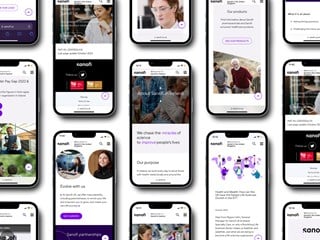Telehealth Access and Experiences Done Right
With telehealth continuing to advance and become a more expected option for healthcare providers, how to make a successful telehealth platform has never been more important.

June 02, 2022
With telehealth continuing to advance and become a more expected option for healthcare providers, how to make a successful telehealth platform has never been more important.
At the beginning of the pandemic, it seemed that almost overnight telehealth became a critical pathway to connecting patients with providers—and vice versa. Where a more robust telehealth experience may have been a goal in a digital roadmap or a slow moving “proof of concept,” it became an urgent priority, and many health systems have been forced to convert telehealth into the primary method of providing care to patients. The better organizations are running platforms like AmWell, Medici, Mend, NextHealth and Teladoc or expanding use of videoconferencing platforms like Zoom, but there is still room to improve access and experiences. This has been done largely without time to think about how the telehealth experience affects the way that the patient accesses care or to create a comprehensive solution that fully meets patient needs and expectations.
Telehealth—Looking Ahead
As we move through the next several years, telehealth will continue to play a pivotal role in day-to-day healthcare interactions for patients. And, as health systems, patients and providers become more accustomed to using telehealth to connect with each other, it is going to become table stakes to deliver the best possible access points to telehealth opportunities.
It’s going to be critical for health systems to:
- Look at ways to more clearly and thoughtfully orient the patient to available telehealth offerings.
- Provide supportive, educational information to get the patient in and out of their telehealth appointments.
- Stay competitive in a tight marketplace, as telehealth offerings are popping up everywhere—especially in private insurance and urgent care.
- Create clear access to best-in-class experiences to increase telehealth adoption and repeat appointment scheduling.
Telehealth technology platform aside, it is very important to explore ways that the health system can improve patient access and customer experience as it relates to telehealth. At Valtech, we believe that it is important to remember the key principles and foundations of a good UX are crucial to delivering a valuable and meaningful telehealth experience to patients. Here are some of our best practices to keep in mind as you build or expand your telehealth presence within your health system.

Ensure that Telehealth is Findable Across Pathways
Making sure that patients can find your telehealth offering is hugely important, no matter their entry point on the website. This means that it is critical to make sure that you have information about telehealth offerings at various locations and conversion points. Huge opportunities lie in integrating telehealth information and content across the health system, and while that may add complexity to already complex situations, the benefits lie in better downstream patient experience.
To make sure that your telehealth offerings are findable, it is important that telehealth terminology and labeling are consistent across the health system and aligned with the terminology that your patient base is most familiar with. There is not currently a “one-size-fits-all” term that patients have grown accustomed to using for telehealth, so you may need to take a closer look at search terms that are being commonly used throughout your site or in your geo-market to determine the terminology that is best to use. And, while it’s important to be consistent, you should also look for opportunities to weave in additional terminology or clarifying language in written content to help boost SEO and organic search traffic to your telehealth offerings.
Some of our best practice examples to ensuring that Telehealth is findable on your health system’s website include:
- Adding a filter option to your Find a Doctor or Location searches so that patients can filter on only those providers and locations that are offering telehealth services.
- Including telehealth information at the provider and location level to help patients looking at specific providers or locations to understand if telehealth is an option.
- Integrating your telehealth offerings into your existing online scheduling in a way that makes it clear to the patient when they are scheduling a telehealth visit versus an in-person visit.
- Incorporating telehealth calls-to-action and information on Service pages to direct patients towards telehealth offerings at the service line.
- Looking closely at internal site search terms and at Google Trends to see the telehealth terminology that matches up in your geo-region and at the larger national and international scale.
Provide Original & Informative Orientation Content Around Telehealth
The content helping guide your patients to schedule and attend a telehealth appointment needs to support patient access across a wide spectrum, and patients looking to schedule a telehealth appointment look for informative and educational content that helps them determine if a telehealth appointment meets their needs.
With telehealth, as in any other care offering, it is important to make sure that you have the right content that helps the patient decipher the options available, and that you are not unknowingly creating barriers by not providing enough information or guidance to support their needs.
Some of the best-in-class telehealth experiences that we’ve seen provide content that includes:
- Clear step-by-step instructions for patients looking to schedule a telehealth appointment—making sure that if the instructions are different for new versus existing patients that both sets of instructions are easy to find.
- Frequently asked questions (FAQs) that cover common topics that the patient may have about a telehealth appointment.
- Instructional videos and imagery to walk the patient through appointment setup and visit logistics.
- Clear information on how telehealth visits are covered under common insurance plans.
- Specific services and conditions listed that can be covered during a telehealth appointment. It is very beneficial to provide clear information around the types of conditions that can be treated during a telehealth appointment, and what the patient should do if their condition does not meet the criteria for a telehealth visit.
- Content that clearly states what the patient can expect before, during, and after an appointment, and if there are any vitals or information that they should bring to their telehealth appointment.
- Technology needs or requirements—like a phone or tablet device—that are required to be able to attend their appointment.

Make it Extremely Easy-to-Use and Easy-to-Access
As with any other experience, it is important to make sure that the patient finds your telehealth experience easy-to-use and easy-to-access when they come into contact with it. In order to help eliminate any barriers or roadblocks in the patient’s journey towards a telehealth appointment you will need to make sure to focus on where you can make things even easier for the patient to be successful. As the infamous IBM quote states: “Ease of use may be invisible, but its absence sure isn’t.”
There may be situations where your health system provides a variety of telehealth services that suit different needs. In these circumstances, it is very critical to provide clear guidance on which offering is best for the patient, and make sure that any content does not create circular loops in and out of telehealth offerings that create confusion. It is also beneficial to consolidate the offerings as much as possible at the top of the telehealth funnel, and then route the patient to the service that best meets their needs once they have gone a bit deeper down the conversion funnel.
To help reduce any friction that the patient may encounter, we recommend:
- Providing clear information for both new and existing patients about their opportunities to virtually connect with providers.
- Making it easy for patients to clearly understand what to do if their existing provider is not offering virtual visits, and where they can safely and confidently connect with a different provider that is offering telehealth visits.
- Displaying direct links to application downloads that are required for the telehealth appointment—in the AppStore, on GooglePlay, or delivered via email or text message—so patients can easily click out to these to prepare for their appointment.
- Visibly showing appointment times that are available—in real time—for scheduling.
- Delivering an email confirmation with any direct links to applications, forms, or other materials that the patient needs to bring with them to their appointment.
Selling the Alternative to In-Person Care
As the world navigates through COVID-19, more and more people are using telehealth out of necessity, and in the long-term, it’s going to be important to continue to support telehealth as a quality alternative to in-person care wherever possible. Patients may shop around and compare different telehealth providers before they schedule an appointment, and this makes it even more critical to incorporate helpful peer-to-peer insights that are proven to support the decision-making process.
One of the biggest opportunities at the brand level is to maintain consistent branding and navigation where possible in the telehealth experience so the patient can see that telehealth is an integral part of the services offered at the health system. Essentially, your telehealth offerings should not appear as if they are “tacked on,” and instead should be as integrated into existing experiences as possible.
Other tactics that help present telehealth as a quality alternative to in-person care include:
- Featuring patient testimonials that demonstrate successful, easy telehealth visits that delivered exceptional care at a time when the patient needed it most.
- Incorporating patient reviews and star ratings on telehealth visits.
- Creating incentives and benefits to using telehealth offerings that help to encourage a patient to schedule.
Keep Telehealth Offerings Transparent & Trustworthy
Plainly said, if a health system or provider presents themselves in an organized, transparent way, then patients are going to have more trust in putting the care of their health in that system or provider’s hands. With telehealth, it is important to be transparent around the patient’s responsibilities and what will happen during an appointment so the patient can have this information available as they are determining whether a telehealth visit is right for them.
The best ways to encourage trust of telehealth offerings are:
- Clearly displaying visit pricing information—even a “starting at…” message is better than not showing anything at all.
- Making it easy to see bill payment options for telehealth services and provide direct links to the bill payment portal from the telehealth experience.
- Providing information on insurances and self-payment methods accepted for a telehealth visit.
- Incorporating information about the provider or team of providers that the patient will engage with during their telehealth appointment—especially in situations where it is not their normal care provider.
Deliver Accessible Telehealth Experiences
Lastly, ensure that patients across a spectrum of abilities, ages and languages have equitable access to telehealth offerings. As with other parts of your digital experience, make sure to follow best practices to meet the requirements outlined in Web Content Accessibility Guidelines (WCAG) and ADA compliance regulations. As much as possible, eliminate medical jargon and use plain language. If you don’t have the tools in-house at your health system, work with your digital partner to run an accessibility scan across your telehealth experience to make sure that your content is following accessibility best practices so you can remediate any problem areas.
And, for patients where English is not their first language, make sure to provide telehealth services in their native language as much as possible. Create pathways to telehealth content that is written in other languages and guide the patient down a path that makes it easy to find a provider that speaks their preferred language.
Summing Up the Way Forward
Creating more integrated and thoughtful approaches to telehealth—especially focused on patient access—are critical as we navigate through the next phases of medicine. With patients becoming more accustomed to telehealth as an option for care, it’s going to be critical for the organization as a whole to deepen the support of telehealth in order to stay competitive in a tight marketplace. Investing in the right tools and in a quality user experience around telehealth that improves findability, provides educational content, supports ease-of-use, encourages credibility, and maintains accessibility is going to be make-or-break for both mission and competitive survival.
Should your health system need help building or optimizing your telehealth experience, Valtech would love to help. We’re passionate about patient access and creating solutions that deliver best-in-class experiences. Contact us anytime you’re ready to get started.



